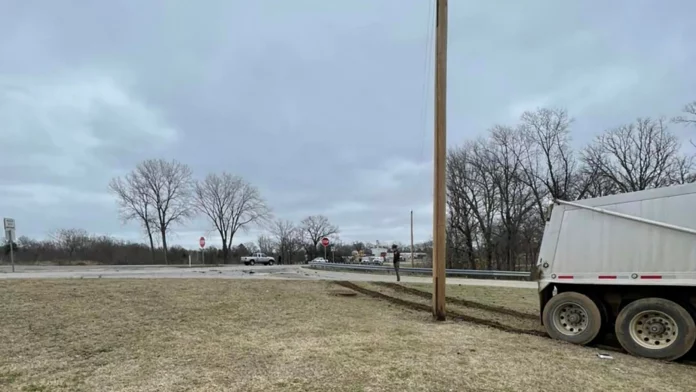On Thursday, the National Transportation Safety Board (NTSB) released new information on a two vehicle crash that left six girls dead in Oklahoma earlier this week.
The crash occurred around 12:20 p.m. on March 22 in Tishomingo, Oklahoma.
Absolutely terrible news from Tishomingo, OK at US377/OK 22 intersection 6 HS students killed in collision with Semi truck. @kfor #Chopper4 https://t.co/otSvSwuF48 pic.twitter.com/FFQQUFrlj3
— Marc Dillard (@F5Video) March 22, 2022
From the NTSB report:
…a 1994 Peterbilt truck tractor in combination with a dump semitrailer loaded with gravel was traveling southbound on United States Highway 377 (US-377) approaching the intersection of Oklahoma State Highway 22 (SH-22). At the same time, a 2015 Chevrolet Spark passenger vehicle (Chevy), occupied by a teenage driver and five teenage passengers was traveling eastbound on SH-22 approaching US-377. At this location, the intersection is controlled by a stop sign regulating traffic on SH-22. The posted speed limit for US-377 is 50 mph.
Witnesses reported the Chevy made a “rolling stop” at the stop sign and entered onto US-377 where the combination vehicle struck the front-left of the Chevy, pushing it off the roadway to the southwest. The combination vehicle then departed the roadway and came to rest in a private driveway on the east side of US 377. As a result of the crash, all six occupants in the Chevy were killed; the truck driver was uninjured.
NTSB investigators have been on scene since Wednesday coordinating with the Oklahoma Highway Patrol.
Investigators will look at the following issues:
Highway — The environmental factors involved in a crash including the roadway condition, signage, geometric design of the highway, lighting, weather condition, traffic volumes, and accident histories. The group also evaluates the highway infrastructure for adequacy of roadside barriers and compliance with various design manuals.
Human performance — The performance of the human operators involved in the accident and looks at all ‘before-the-accident’ factors that might be involved in human error, including fatigue, medication, alcohol, drugs, medical histories, training, workload, equipment design and work environment.
Motor carrier — The operations of the driver and motor carrier. This includes an examination of the motor carrier’s compliance to applicable federal and/or state regulations and the oversight of the involved companies by Federal and state authorities. Investigators may also review the carrier’s overall safety culture and related safety programs involving driving operations, fatigue management, vehicle maintenance and driver fitness for duty.
Reconstruction — Mapping and documenting the scene as well as the vehicles involved in the crash, and analyzing physical evidence and vehicle damage to reconstruct the crash events.
The on-scene portion of the investigation is expected to be completed by March 28.
The investigation to conclude the probable cause of the crash as well as any contributing factors is expected to take 12 to 24 months.
